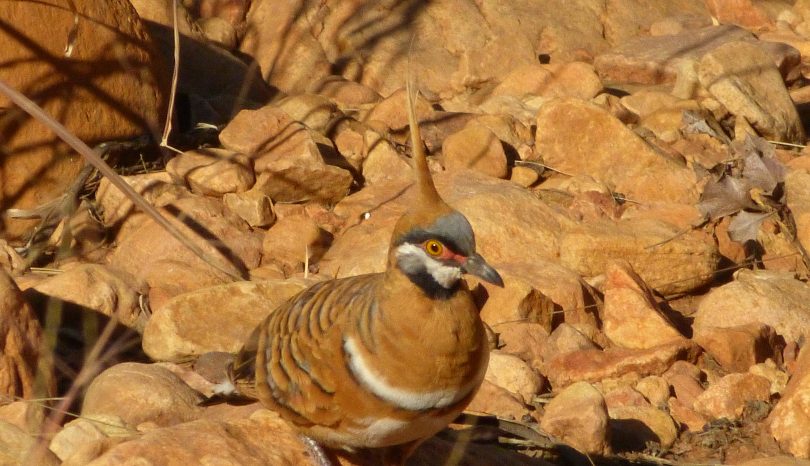Despite the isolation and aridity of Australia’s deserts these dry places are home to an astonishing range of birds. Some of them have special adaptations for desert life and live only in the deserts, some are at home in many of Australia’s drier places, and some only visit when the conditions are right, usually after good rains have allowed plants to flower and seed prolifically and water to accumulate in rock holes, clay pans and lakes.
Desert Discovery does periodic biological surveys in the desert that provide a snapshot of the mammals, reptiles, plants, insects and spiders, fungi, and birds. This snapshot varies depending on whether the area has had a good rain year (and there are a lot of birds) or a poor one. Our bird survey team has a team leader and a group of observers whose job it is to travel as widely as possible throughout the project area and do as many bird surveys as they can. Typically, we do a great many surveys (sometimes several hundred) and this allows us to get a good picture of the birds using the area at that time. With a team of eagle-eyed and keenly interested observers, we don’t miss much! Members of other teams also provide spot records for birds they see.
The idea behind the bird surveys is to provide as many records as possible of all the birds in the project area. We want to know what is common as well as what is unusual or rare. This can be tricky for some groups of birds, particularly those that are shy or less keen on being seen, those that are rare and thus might not be encountered often or at all, and night birds that are awake when most bird observers are asleep. Yes, despite the many surveys we do, the team does sleep (usually after many yarns around the campfire).
Identifying birds during a bird survey requires experience that people develop over time. Anyone can be a competent bird observer – it’s certainly not limited to scientists alone – but developing the skill to identify birds by sight and sound generally takes some years. Sometimes our observers have a lot of experience in identifying desert birds, but sometimes they might be quite skillful at identifying the birds in their home area and they have no experience with desert birds. Generally, anyone used to identifying birds elsewhere will be able to get their eye – and ear! – in, after a few days in the desert.
Australia’s deserts are home to many larger birds such as parrots, cockatoos and birds in the eagles and hawks family. Some, such as Budgerigars, may be present in tens if not hundreds of thousands in good years, and disappear completely in prolonged dry times. Smaller birds such as some honeyeaters may also come and go depending on the rainfall, but the desert is also a permanent home to some small birds. Some of these are Australia’s ‘little brown birds’, loved only by birdwatchers, while others such as wrens are iconic species that turn up on postcards and in the photos of travelers lucky enough to get a good shot.
